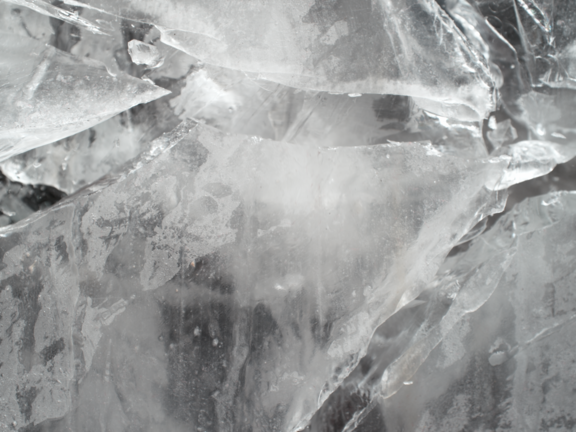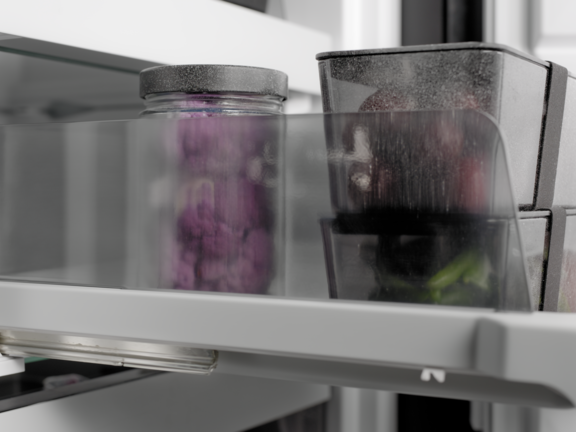

Gone OTT on your weekly shop, have leftovers from a celebratory meal or want to throw out as little as possible before going on your hols? The good thing is, you can freeze a wide range of foods. In the freezer, the shelf life of fresh foods is extended by weeks and sometimes even months. To freeze them safely, it’s worth bearing in mind a few points. The best way to get frozen foods down to the right temperature, which containers are best and whether you should refreeze defrosted food are questions that all need answering.
Freeze food and extend its shelf life by weeks and months in an instant: Cooling fresh food down to minus 18 °C in the freezer is a clever move for optimum food storage. It enables you to enjoy seasonal products like fresh asparagus even in winter and to always have cooked meals on hand.

What’s more, a household freezer saves you from, among other things, throwing food away. If you’ve bought too much or don’t manage to use everything up before you go on holiday, simply put it in the freezer. This works with countless products like fresh fruit, vegetables, meat and fish, as well as cooked meals. The food trend of meal prepping saves you some time in the hustle and bustle of everyday life: it enables you to pre-cook and freeze meals in portions and to serve up a delicious dinner in a jiffy. Use practical BORA accessories to freeze and process food.
Good to know: food usually freezes at a temperature of minus 18 °C and germs and bacteria stop multiplying. This keeps food fresh for considerably longer.
From artichokes to zander: you can freeze a wide range of foods. Generally, the less fat a product has and the drier it is, the more suitable it is for freezing. Fatty foods can also be brought down to the right temperature for freezing, but should not be stored in the freezer for long. Fatty minced meat, for instance, does not last longer than four weeks on ice. You can freeze cream for about three months.

Some dishes are especially suitable for further processing after defrosting as their consistency changes. This applies to apples and onions: they become less firm but can still be used for frying and cooking. Foods with a high water content like tomatoes, cucumbers and leaf lettuce are also only suitable for freezing under certain conditions. Once defrosted, they become mushy and their flavour is also affected.
Raw potatoes and eggs should not be frozen under any circumstances. When thawed, the flavour of potatoes changes and they become sweet. Eggs can crack when freezing. Cream cheese and yoghurt don’t belong in the freezer either.

The shelf life in the freezer varies from one food to another. Lean meat can be frozen for a while longer than sausages. The figures below will give you some guidance:
In our overview of food storage you can find out more about how long certain goods can be refrigerated and frozen.
Once frozen food has been taken out of the freezer, you need to use it quickly. This prevents germs from reproducing in the open air. Some foods must be fully defrosted before use; others can go straight into the pot or frying pan while still frozen.

You do not need to defrost frozen vegetables. Simply put them in the pot when still frozen.
This also applies to seafood like prawns, frozen mussels and squid.
Baked goods do not need defrosting either. You can quickly freshen up rolls in the oven and place bread and toast in or on top of the toaster.
Meat and fish can be gently defrosted in the refrigerator. This restricts germ growth. Alternatively, you can use the defrost function on your microwave if it has one.
Tip: depending on the quantity, it takes several hours to defrost meat and the like. Ideally, you should place the frozen food in the refrigerator the night before you need it.
You only need to do a couple of things to perfectly prepare your food for freezing. The following will help you preserve its quality and make things easier when you take it out:
Trim and wash fresh fruit and vegetables before freezing to get rid of germs and so that you can use the food right away when you need it.
Cooked foods, bread and fresh meat and fish are best frozen in portions. Then you can simply take out how much you need and leave the rest in the freezer. Ensure that cooked foods are fully cooled before freezing so that the items already in the freezer do not thaw out.
Many vegetable varieties should be blanched before freezing. By briefly immersing them in boiling water, you blitz germs and preserve colours and vitamin content.
When freezing food, opt for containers that can be tightly sealed to prevent ice crystals from forming on the food and to stop it from drying out or getting freezer burn. Fill them just over one-third full. This gives the frozen food enough space to expand and also enables you to freeze it in glass. The low amount prevents the glass from cracking.
Refreezing defrosted food is not usually a good idea. Germs and bacteria resume growth after defrosting. This can result in a high bacterial load. Meat and fish especially should be consumed soon after thawing and should not be refrozen. Exception: once cooked, they can be put back in the freezer.
Plastic, glass or stainless steel: you can freeze food in virtually any container. You merely need to ensure that it is frostproof and tightly sealed. Freezer bags should be sealed as airtight as possible.
To make it easier to take out, freeze bread in slices. Use an airtight container or freezer bag. This stops baked goods from drying out.
Practically all solid vegetable varieties can be frozen raw. These include cauliflower and broccoli, carrots, kohlrabi, mushrooms, peppers and many more. However, vegetables with a high water content can become mushy after thawing.
Conventional packaging often cannot withstand the temperatures in the freezer. It can become porous and it may release hazardous substances. It is best to transfer food to a separate container for freezing.
Freezer burn is not detrimental to your health. However, the flavour will be affected, meaning that food is generally no longer enjoyable.
As a rule, fruit and vegetables do not spoil in the freezer. However, after a long time in storage, they may lose flavour and nutrients and become mushy.